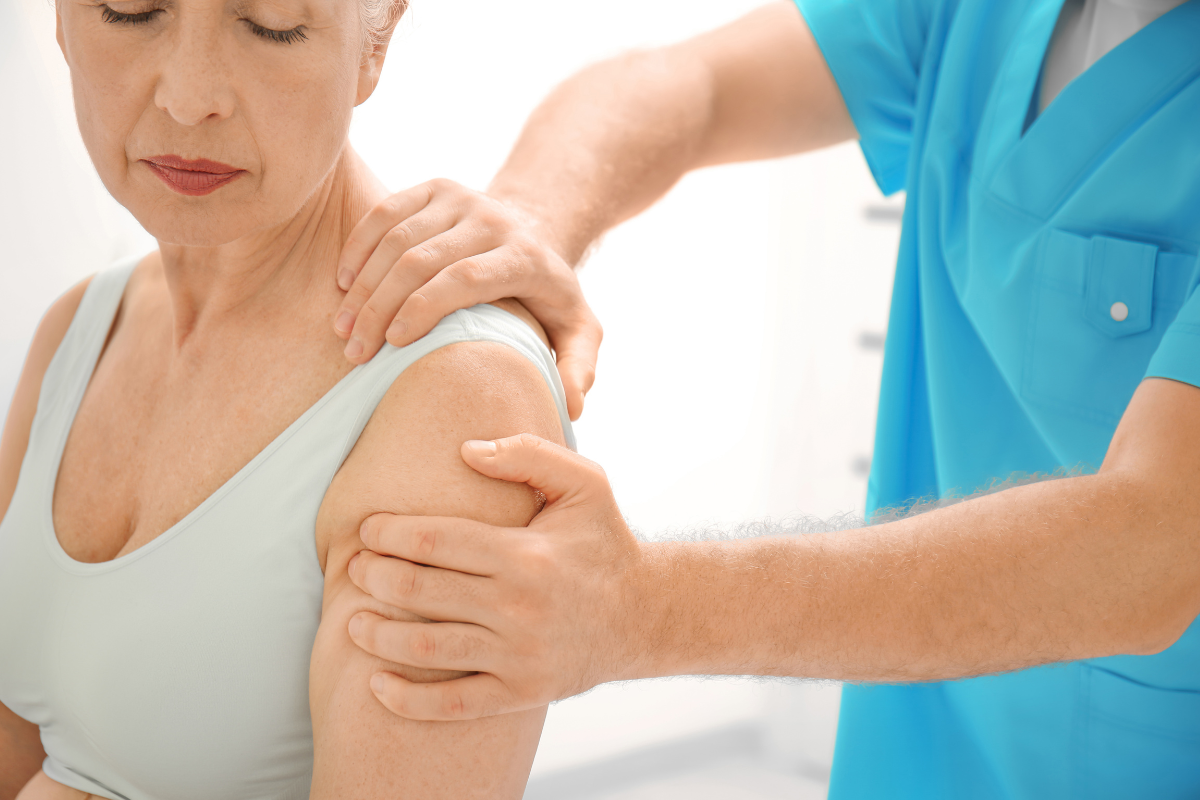EIM Personal Training offers personalized fitness and nutritional plans to best meet your needs. We do private training sessions, small-group workouts, and nutritional guidance. Learn more about EIM Personal Training’s services here.
What To Do After Physical Therapy Pain
Physical therapy is a muscle training process that utilizes special stretches and exercises in order to regain or improve mobility in one’s body. Physical therapy is often recommended by healthcare professionals to help ease the healing process after surgery or an injury. Physical therapy can also be utilized to improve function in one’s body from stress caused by laborious activities, old age, or chronic conditions such as scoliosis. Because physical therapy uses exercises to retrain muscles, soreness and swelling after physical therapy often occur. In this article, we will examine the best ways to reduce post-physical therapy pain.
Your First Appointment
When visiting your physical therapist for the first time, make sure to bring any necessary documents that they might need. For example, if you have had surgery, make sure to bring your X-rays or MRI scans, a list of your current medications, your insurance card, and any written instructions or letter of referral given to you by your doctor.
Dress comfortably for your first appointment. Wear loose clothing and comfortable tennis shoes that will not restrict your movements. Sometimes, your physical therapist might need to see the injured area in order to assess it and plan for treatment.
Plan for someone to drive you home from your first appointment. Most physical therapy starts immediately after surgery, and you will probably be the most sore after the first day. To ensure your own comfort, ask a family member or friend to drive you home from your first appointment. This will make the recovery process easier for you.
Identify Your Pain
Everyone experiences pain differently, but it is important to identify the type of pain that you are experiencing. After physical therapy, your muscles should feel sore, and swelling is common. However, you should seek medical attention if your pain is sharp, does not decrease over time, or if you experience new pain. Decreasing mobility is not a common side effect of physical therapy, and you should seek medical attention immediately.
Pain Management
There are several ways to manage pain after physical therapy. Here is a list of the most efficient ways to manage your post-physical therapy pain.
- R.I.C.E.– This acronym helps us remember the best way to manage pain. Rest. Ice. Compression. Elevation. Make sure that you are resting after physical therapy, applying ice and compression to the swollen areas, and elevating them if applicable. This treatment should reduce swelling and reduce pain.
- Over-the-counter pain medicine- Advil, Tylenol, etc. Over-the-counter pain medication can be helpful to reduce pain and swelling. Ask your doctor if this kind of medication is right for you.
- Stretching– To reduce lactic acid build-up which causes soreness and stiffness, it is important to stretch regularly. Stretching can help you regain motion and decrease pain.
Contact EIM To Begin Your Fitness Journey
Embarking on your personal fitness journey with EIM starts by conducting a comprehensive evaluation of your health, fitness status, and background. Your personal trainer might collaborate with your medical practitioner to guarantee your well-being and craft a tailored workout regimen. We will appraise your existing fitness level and gather measurements to facilitate the tracking of your advancement. EIM Personal Training can help you improve and maintain your mobility, so contact us today.

